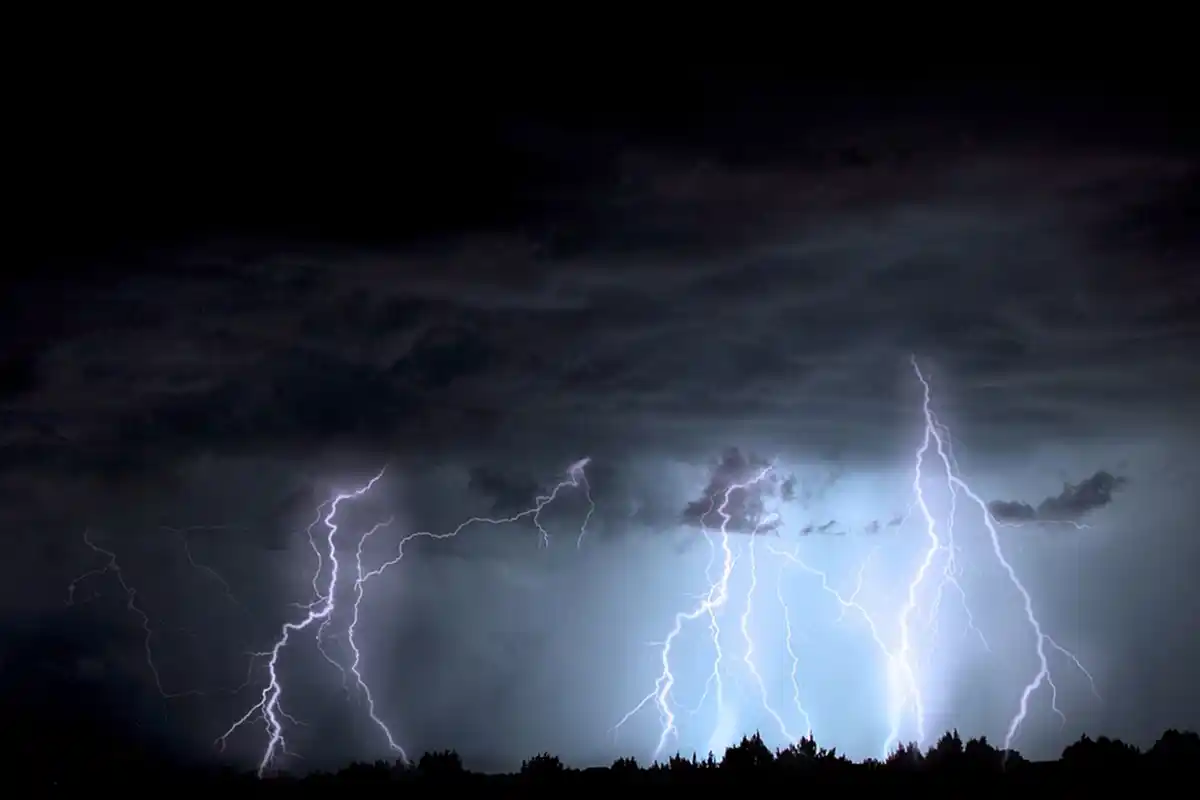
How does the Arizona Monsoon Affect Bees?
The other day, a close friend asked me how the monsoon here in the Phoenix metro area, affects honey bees. That got me thinking, so I decided to write about it in our bee control website’s blog.
So, to begin with, it is important to understand, that the Arizona monsoon is a seasonal weather pattern that typically occurs from late June through September. As such, it brings heavy rains and increased humidity to the desert landscape. This climatic phenomenon can radically alter environmental conditions, impacting a wide array of wildlife, including the crucial pollinator, bees. Understanding how the monsoon affects these productive creatures is essential for conservation efforts and agricultural productivity. So, without further ado, here are some important ways in which the monsoon affects bees in Central Arizona.
It Provides an Abundant Water Source
The monsoon season can be a huge boon for bees. That’s because the monsoon rains rejuvenate the dry desert landscape, leading to a surge in flowering plants, an essential food source for various bee species. Plants like desert marigolds, penstemons and lupines bloom extensively during and after the rains, providing nectar and pollen for bees. This rich food supply is vital for their survival and growth, especially for honeybees and native bee species that rely on diverse diets.
Additionally, increased hydration in the environment can boost bee activity, enabling them to forage more efficiently. With plentiful food available, colonies can thrive, reproduce, and strengthen their populations. This is particularly significant when considering the stressors bees face, such as habitat loss and pesticide exposure. The monsoon offers a brief respite and a chance for recovery.
It Offers More Nesting Opportunities
Monsoon rains can also create favorable conditions for the nesting and breeding cycles of some bee species. The moisture in the ground can help soften the soil, making it easier for ground-nesting bees to excavate burrows. Additionally, the proliferation of flowers encourages bees to establish new colonies, as they find ample food resources nearby.
It Presents Additional Challenges and Risks
While the monsoon brings much-needed relief and resources, it also introduces challenges for bee populations. The heavy rains can inundate nesting sites, especially for ground-nesting bees, leading to high mortality rates. Furthermore, flooding can wash away soil, disrupting nesting behaviors and disturbing established colonies.
Moreover, increased humidity can create a conducive environment for pests and diseases, which can adversely affect bee health. For example, Varroa mites, a common threat to honeybee colonies, flourish in warmer, wetter conditions. This dynamic interplay of favorable and unfavorable conditions highlights the need for bees to adapt their behaviors and strategies in response to changing weather patterns.
It Influences Pollination and Agriculture
The Arizona monsoon directly influences agricultural practices, particularly in the state’s diverse farming landscape. Crops such as melons, squash, and alfalfa rely heavily on bee pollination. The increased flowering brought on by the rains boosts the availability of these crops, potentially improving yields for local farmers.
However, a sudden influx of rain can also disrupt pollination activities. For example, wet conditions can keep bees from foraging, consequently affecting crop pollination and the overall productivity of farms. Understanding the timing and intensity of monsoon rains can help farmers prepare for these fluctuations, enabling better management of their crops and reliance on bee pollinators.
It Impacts Climate Change and Future Considerations
It should be no surprise that weather patterns continue to be impacted by climate change. That said, researchers are increasingly concerned about how climate change affects changes in monsoon intensity, frequency and timing could impact bee populations in the future. For instance, an unpredictable monsoon season with irregular rainfall may complicate the flowering cycles of plants, leading to mismatched timing between flower availability and bee foraging activity.
Long-term studies will be essential in identifying trends and crafting robust conservation strategies. Efforts to protect biodiversity, including preserving habitats and supporting sustainable agriculture, will be vital for ensuring that bees can adapt to an ever-changing climate.
While the Monsoon rains provide vital resources and renewed habitats for bees, they also pose challenges that can affect their survival and productivity. Acknowledging and taking a hard look at these factors is vital for the conservation of bees in Arizona, which will ultimately benefit both ecosystems and agriculture.